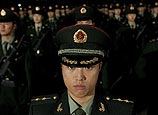
The company's US$879 million Asia ex-Japan fund, launched in November 2009, is now overweight China for the first time, said Rae, who also manages its US$150 million QFII China fund.
The stock market's fundamentals are back in focus and they could make the recent enthusiasm seem premature, said Simon Grose-Hodge, head of investment advisory for South Asia at private bank LGT.
For one, there is unlikely to be a repeat of anything remotely like the 4 trillion yuan (US$640 billion) stimulus package that guided the Chinese economy through the 2008/2009 global financial crisis.
Instead, there may be smaller, more targeted spending plans that don't make cheap credit available across the board.
And long-standing issues for investors, such as transparency, reform of state-backed companies, corporate governance and regulator interference in the market, have yet to be properly addressed despite some positive noises from authorities.
So while the H shares in Hong Kong are showing signs of life, China's mainland stock markets are languishing near three-year lows and on the nose with retail investors. Two-thirds of Chinese companies that have posted third-quarter earnings missed expectations, according to Citi Private Bank. Profits fell an annual 5.8 percent, and analysts, on average, are still cutting earnings expectations for next year.
Rising non-performing loans (NPLs) pose a risk for the banks, a hangover from cheap credit as part of the 2008/2009 stimulus though the NPL ratio is officially reported at 0.97 percent.















 Bullet train attendants receive trainings in China's Shenyang
Bullet train attendants receive trainings in China's Shenyang


![]()
